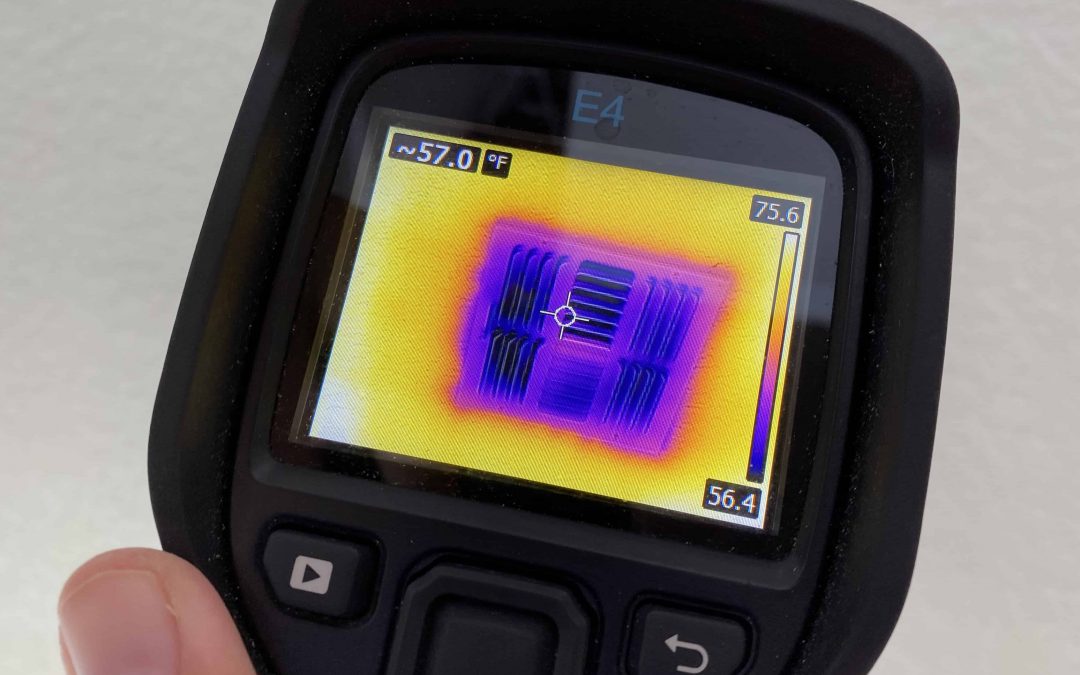Thermal imaging is a great tool that allows us to see more than is possible with the human eye. During a home inspection, we use thermal imaging to look for things like roof leaks, missing insulation, overheating electrical components, and more.
In this blog post, we will discuss some of the benefits of thermal imaging and show real life examples of defects we have encountered using this technology.
How does it work?
Thermal imaging cameras are special cameras that detect different levels of infrared light. These different levels of infrared light translate into colors which allow us to visualize temperatures. Colder objects are usually represented as blue or purple while hotter objects are mostly red, orange, or yellow.
A common misconception is that thermal imaging can penetrate through objects similar to an x-ray machine. This is not true. Unfortunately, we can not use thermal imaging to see behind walls or solid structures. Instead, thermal imaging allows us to see the surface temperatures of different objects.
Thermal Imaging Examples
The following are examples of defects we have encountered during our home inspections using thermal imaging. We perform a complimentary thermal imaging scan of every home we inspect.
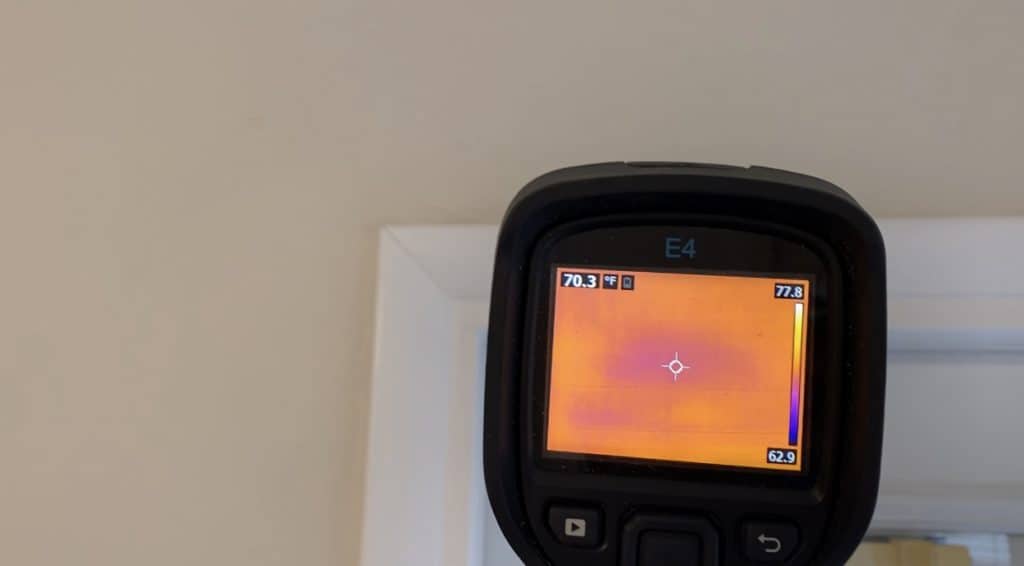
Figure 1 shows a water leak located above a door frame. The purple on the image represents where the leak is located. Upon further investigation, the leak was determined to be the result of faulty flashing in the exterior. Thermal imaging not only allows to see that there is moisture present, but also the size and shape of the leak.
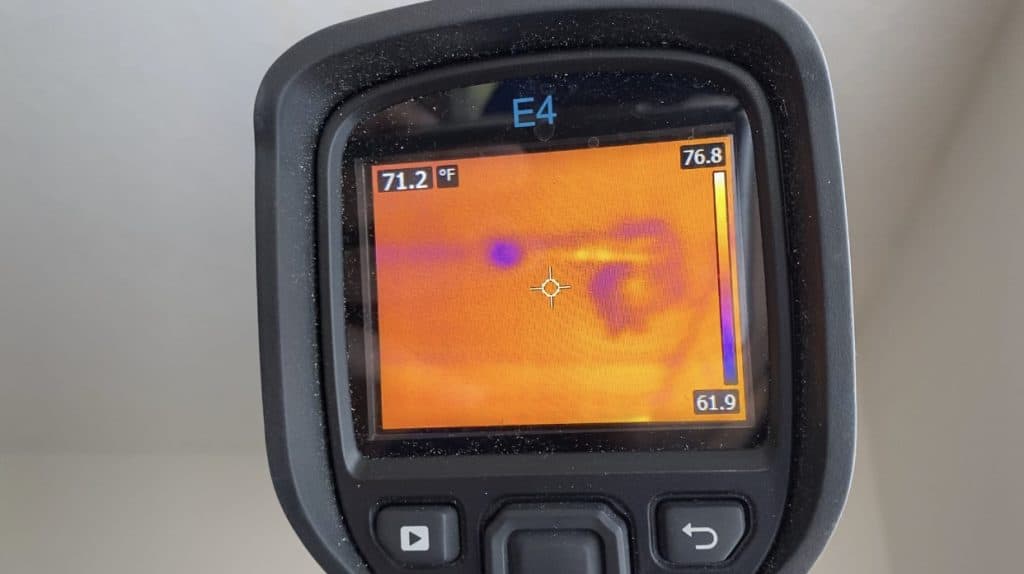
Figure 2 shows a water leak that originated from a bathtub located on the second floor of a 2 story home. The leak was detected after running the bathtub for a few minutes and performing an infrared scan of the ceiling directly below the bathtub. The dark purple on the thermal image shows the source of the leak while the lighter purple areas show where the water has spread.
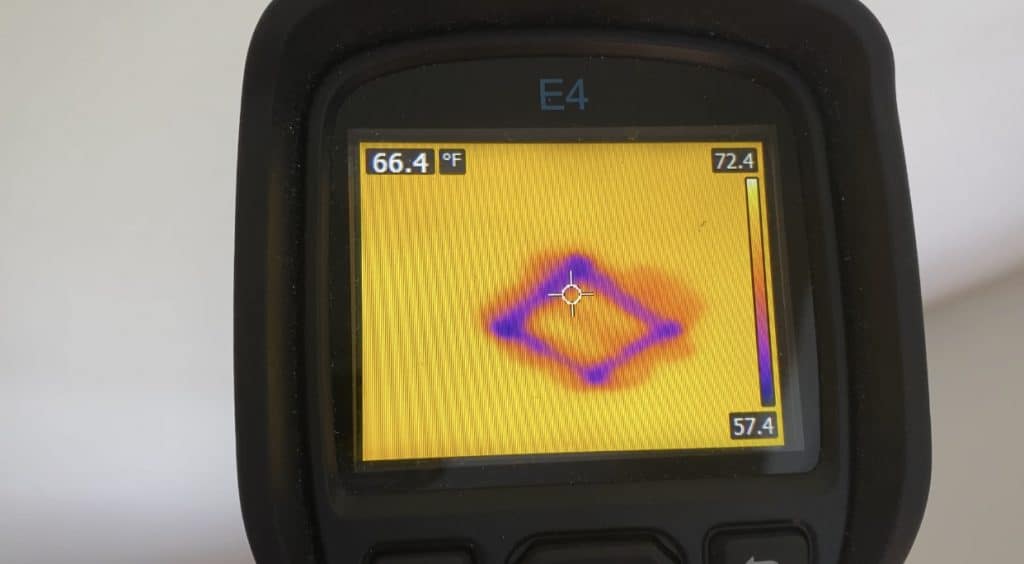
Similar to the example above, figure 3 shows a water leak that originated from a shower located on the second floor of a 2 story home. The image clearly shows the size of the leak, the shape, and the exact location.
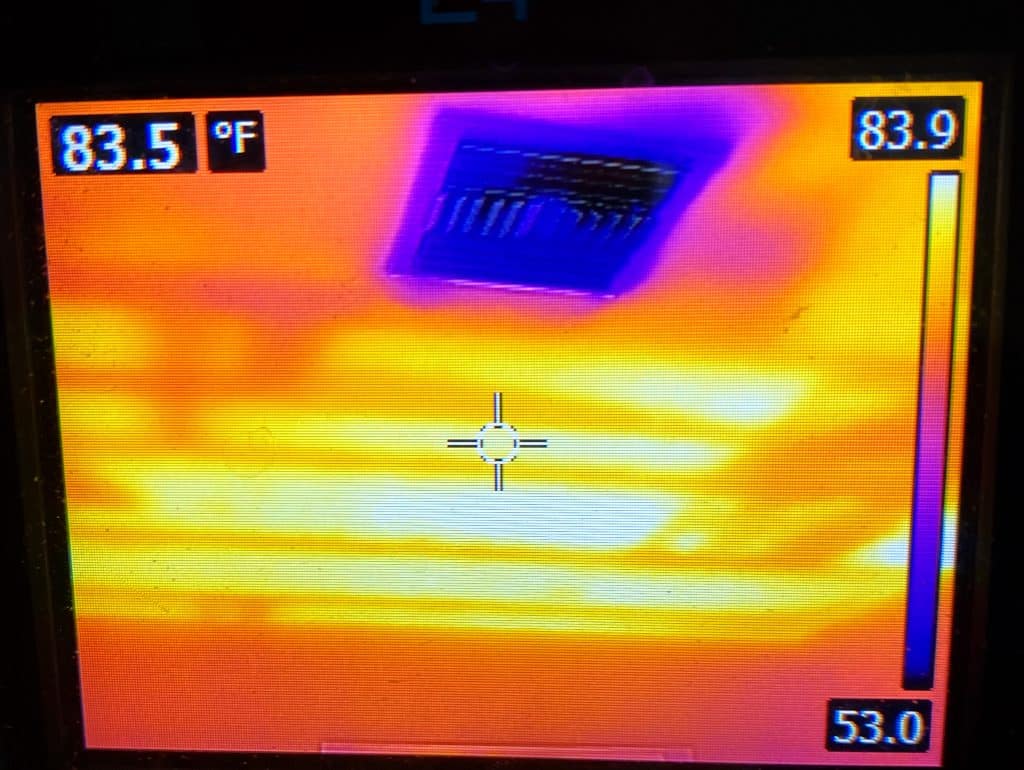
This image (figure 4) shows a home that had little to no insulation in the attic. The yellow spots on the image represent “hot” areas where the heat from attic is radiating into the living space. Insulation is very important. A lack of insulation can affect the comfort of the habitants and result in higher energy costs.

Figure 5 shows air infiltration at an exterior door. The dark purple represents the cold air from the exterior seeping into the home. This was the result of missing weatherstripping which prevented the door from sealing properly. A lack of weatherstripping can not only result in air leaks but also allow insects to enter the property.
Buying a home? At Home Check, we help home buyers get the facts about their homes. Our licensed home inspectors are trained to recognize defects that could affect the safety of your family or the value of your home. Call us today to schedule an inspection or visit our website to get a home inspection quote.

